On its way from Minnesota to Louisiana, the Mississippi River passes through ten states and connects 14 known lakes. Wisconsin, Illinois, Kentucky, Tennessee, and Mississippi are located on the east side of the Mississippi River, whereas Iowa, Missouri, and Arkansas are located on the west. Here, we’ll take a closer look at each of the lakes that connect to this river system.
1. Lake Agassiz (Glacial Basin)
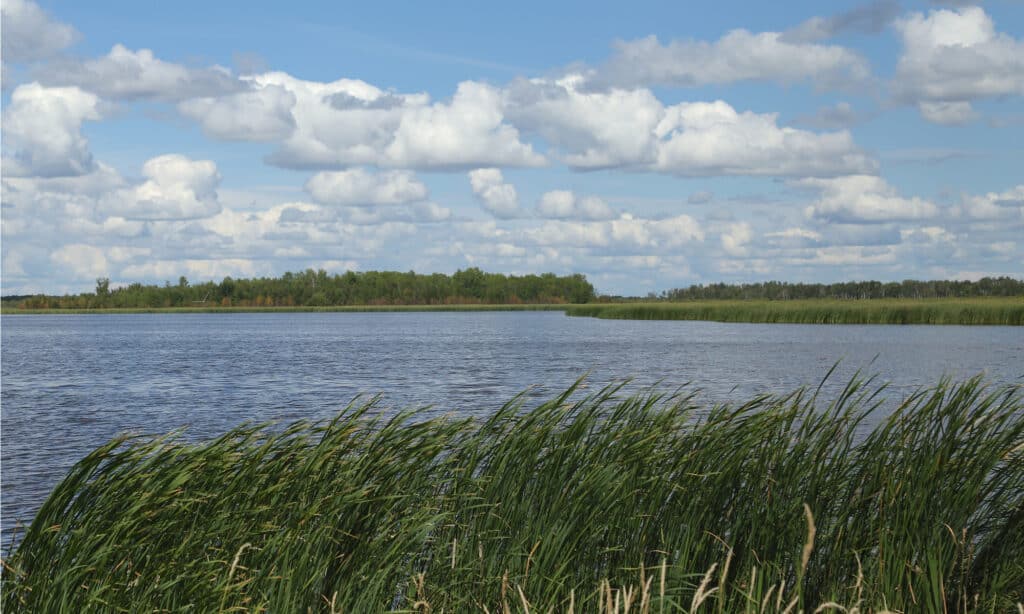
Glacial Lake Agassiz is a lake basin in central North America.
©vagabond54/Shutterstock.com
Glacial Lake Agassiz is a lake basin in central North America. Its area is larger than all the contemporary Great Lakes combined. This glacial lake basin has many lakes. The most famous are Lake Winnipeg, Lake Manitoba, and Lake Winnipegosis. Lake Dauphin, south of Lake Winnipegosis, and Lake St. Martin, on the Fairford or Little Saskatchewan River, the exit of Lakes Manitoba and Winnipegosis, are tributaries to these larger lakes.
The 52-mile Agassiz Recreational Trail is located close to the North Dakota border and offers stunning vistas of the Sand Hill and Wild Rice rivers. Alternating between woodland areas and beautiful farmland, the walk follows an abandoned railroad grade.
2. Baldwin Lake (Anoka County, Minnesota)
Anoka County, Minnesota, United States, is home to Baldwin Lake, a lake located less than a mile from Circle Pines. Fishers can catch crappie, striped bass, bullheads, largemouth bass, and black bullheads in this area, among other species. If you’re not sure if the stream is open to the public, call your local Fish and Wildlife agency first.
Types of Fish:
- Bass
- Bullheads
- Catfish
- Crappie
- Striped Bass
Nearby Bodies of Water:
- Circle Pines, MN
- Golden Lake
- Lexington, MN
- Lino Lakes, MN
- Lino Lakes, MN
- Marshan Lake
- North Oaks, MN
- Poplar Lake
- Reshanau Lake
- Rice Lake
3. Lake Bemidji
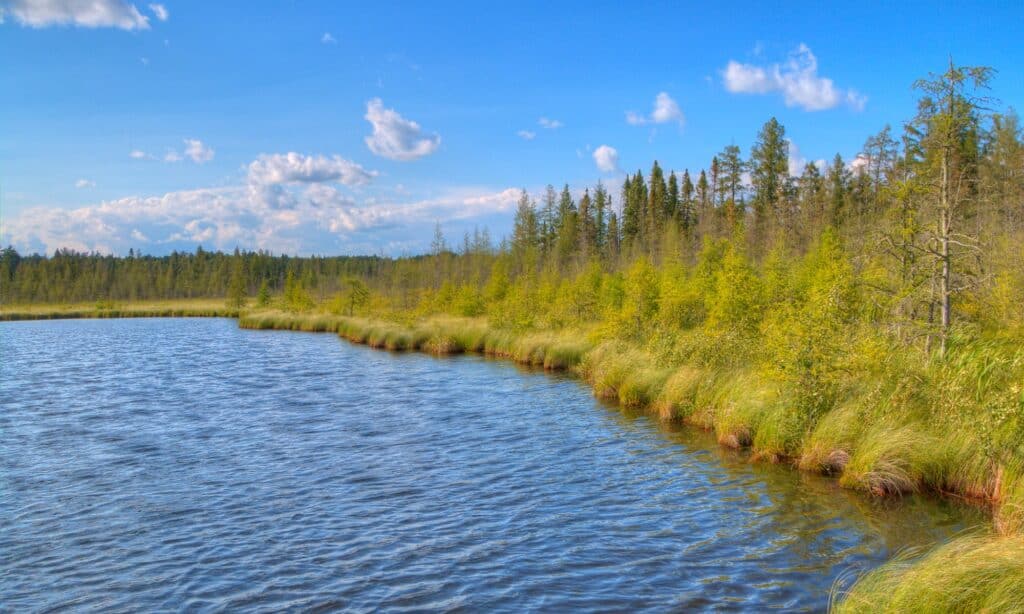
Lake Bemidji is a renowned tourist destination.
©iStock.com/Jacob Boomsma
Lake Bemidji is a glacially created lake in northern Minnesota, USA. It collects and drains the Mississippi, which is less than 50 miles (80 km) downstream. Lake Beltrami is in southern Beltrami County, near Bemidji on its western bank. Lakes Bemidji and Irving were said to have been constructed in Paul Bunyan’s footprint due to their shape. The Ojibwe called the lake “Traversing Lake” because it traverses the Mississippi River.
Lake Bemidji is a renowned tourist destination. The lake offers fishing, boating, swimming, water skiing, tubing, and hiking. North of it is Lake Bemidji State Park. The north trailhead of the Paul Bunyan State Path connects to 16.6 miles of paved trail along the lakeshore. Diamond Point Park, Cameron Park, Library Park, and South Shore Park are among the largest parks in Bemidji. Two resorts, a bed & breakfast, a campground, and many hotels dot the lake’s south side development.
4. Lake Beulah (Arkansas–Mississippi)

Lake Beulah is an 812-acre lake in Walworth County, Wisconsin.
©iStock.com/KaraGrubis
Lake Beulah is an 812-acre lake in Walworth County, Wisconsin. It is an oxbow lake in Bolivar and Desha counties in Mississippi and Arkansas. The Arkansas-Mississippi border follows the lake’s arc. Beulah Bend’s oxbow lake formed when it was cut off from the Mississippi’s main flow. The Napoleon Channel made river transportation more direct, but due to floods in 1868 and 1874, part of the town was permanently submerged, and by 1882, it was no longer visible on river charts. The community of Beulah, Mississippi, has a public boat launch on the east shore. The lake’s water is semi-clear.
Types of Fish:
- Bowfin
- Crappie
- Duckweed
- Largemouth Bass
- Northern Pike
- Panfish
5. Big Lake (Iowa)

Big Lake is bordered by marshy islets.
©This file is lacking author information. / public domain – License
One of the largest lakes in navigation pool nine, Big Lake is bordered by marshy islets. Every year, rainbow trout are added to the lake. Stocking of trout typically takes place in October and February each year. As well as a playground and a soccer field, visitors to Big Lake Park can enjoy a tennis court, a picnic pavilion, and restrooms.
Amenities include:
- Accessible Shoreline
- Boat Access
- Community Fishing Location
- Good/Excellent Shore Fishing
- Hard Surface Boat Ramp
- Picnic Area
- Playground
- Restrooms
- Trails
6. Bussey Lake
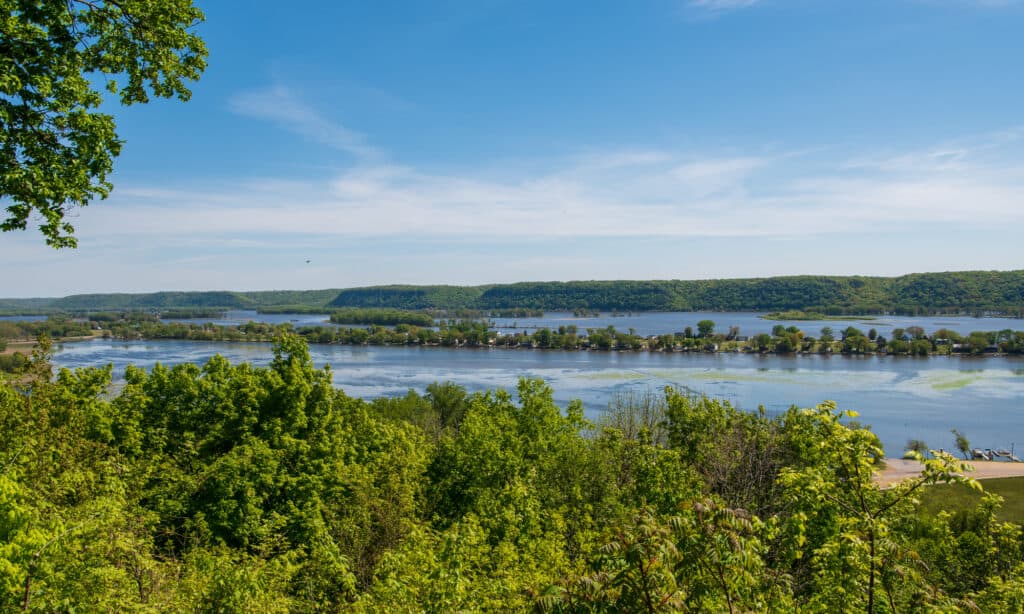
Bussey Lake is a backwater lake on the Upper Mississippi in Iowa.
©Ralf Broskvar/Shutterstock.com
About two miles above Lock and Dam No. 10 in Guttenberg, Iowa, is Bussey Lake. It is a backwater lake on the Upper Mississippi in Iowa. Many rivers and creeks, such as Buck Creek, flow into the lake. It is part of the Upper Mississippi River National Wildlife and Fish Refuge, which has an area of 213 acres.
Types of Fish:
- Black Crappie
- Bluegill
- Channel Catfish
- Freshwater Drum
- Largemouth Bass
- Northern Pike
- Walleye
- White Crappie
- Yellow Perch
Amenities Include:
- Accessible Pier
- Boat Access
- Good Shore Fishing
- Hard Surface Boat Ramp
- Restrooms
7. Cass Lake (Minnesota)
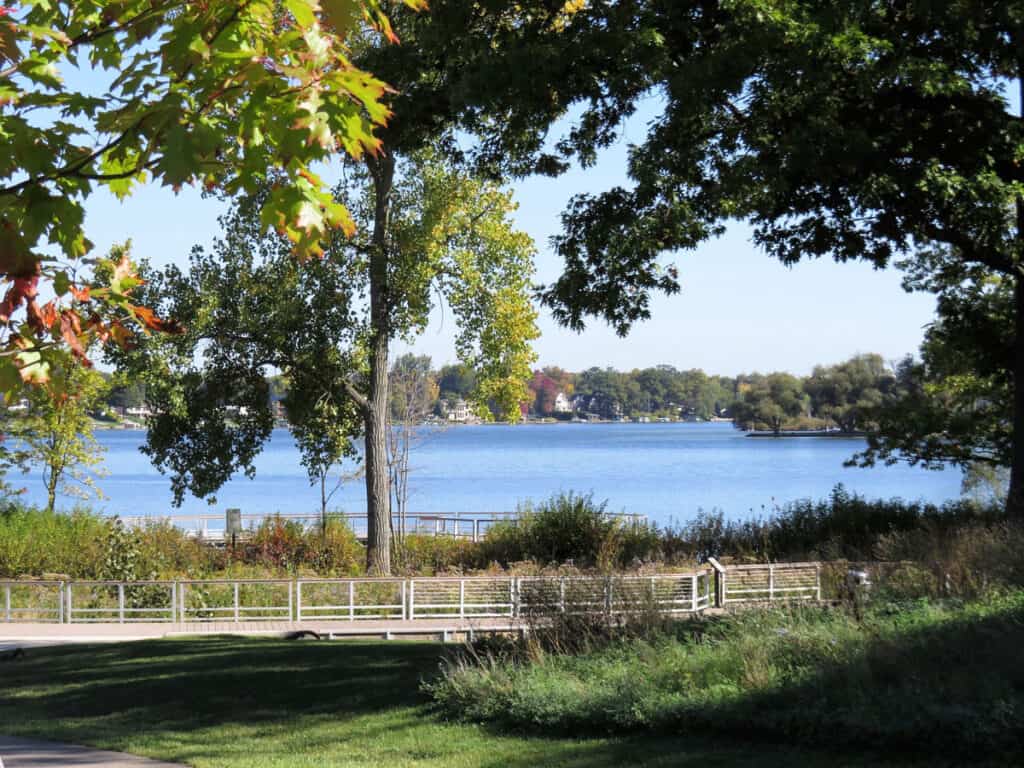
Cass Lake is renowned for fishing, boating, and swimming.
©Ramondo R Gee/Shutterstock.com
Cass Lake is a lake in north-central Minnesota. It’s about 10 miles long and 7 miles wide, and it’s in Cass and Beltrami counties. It is near the Chippewa National Forest and the Leech Lake Indian Reservation.
The lake’s basin formed over a ground moraine on its west side and glacial outwash on its east side. The Mississippi River runs east-west through the lake. The Turtle River joins the lake from the north. The lake features a vast littoral region around Cedar Island. The lake has five islands: Star, Cedar, Potato, and an unnamed one. Star Island is notable for containing Lake Windigo, making it a lake in the middle of an island in a lake!
The lake is renowned for fishing, boating, and swimming. Waterfowl, walleye, northern pike, and yellow perch are all common. On its shores are various campers and resorts. The Chippewa National Forest protects the lake’s southern and eastern borders, as well as all its islands. Norway Beach Lodge is located at the southeast corner of the lake. Cass Lake is on the lake’s southwest shore.
8. Frentress Lake

Frentress Lake is located southeast of East Dubuque on the east side of the Mississippi River.
©Connor McNeil/Shutterstock.com
An Illinois backwater lake, Frentress Lake, is located southeast of East Dubuque on the east side of the Mississippi River.
Amenities Include:
- Beach
- Boat Ramp
- Boat Sales
- Game Room
- Indoor Showers and Restrooms
- Laundry Facilities
- Playground
- Pool Bath House / Restrooms
- Restaurant / Bar
- Retail Shop
- RV Camping w/ Hookups
- Seasonal Boat / RV Storage
- Swimming Pool
9. Lake Itasca
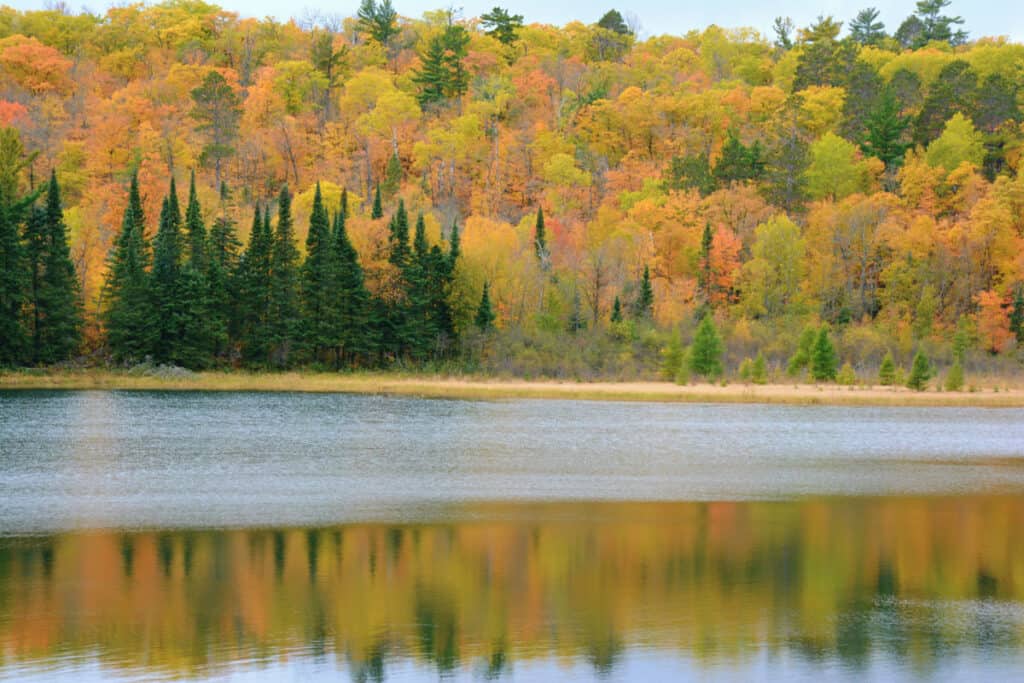
The Mississippi River’s headwaters are at Lake Itasca.
©iStock.com/Jeff439
Lake Itasca is the smallest glacial lake in the US at just 1.8 square miles. The Mississippi River’s headwaters are in southeastern Clearwater County, north-central Minnesota. You can swim in Itasca State Park’s lake. Its depth ranges from 20 to 35 feet.
Amenities Include:
- Bear Paw Cabins
- Bike Trail
- Boat Dock And Access
- Brower Visitor Center Exhibits
- Campgrounds
- Douglas Lodge Cabins
- Douglas Lodge Restaurant
- Forest Inn
- Four-Season Suites
- Mary Gibbs Center, Gift Shop, And Cafe
- Rentals And Tour Boats
- Swimming Beach
- Tour Boat
- Wilderness Drive
10. Lake Onalaska
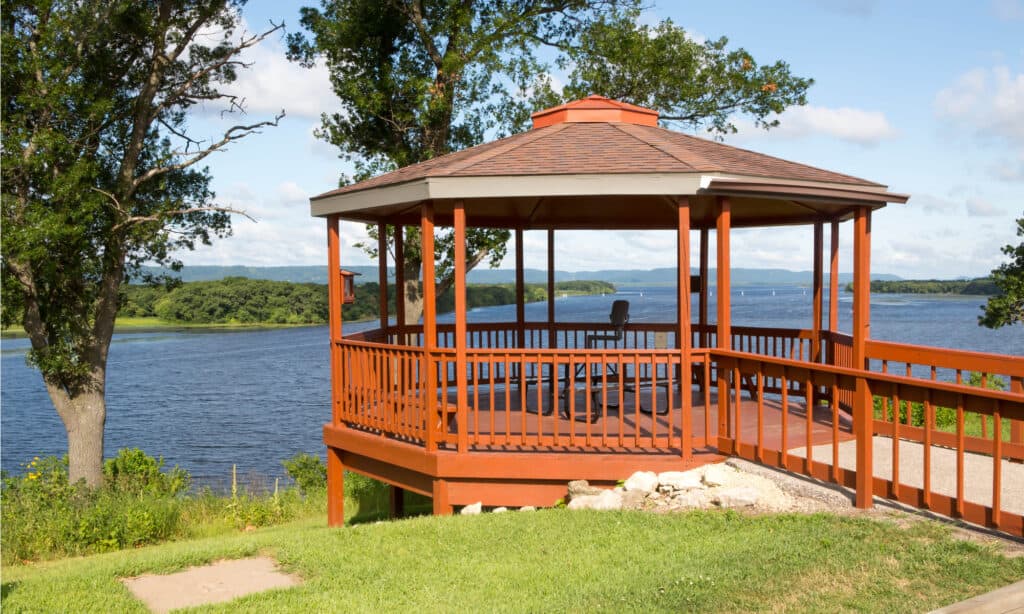
Lake Onalaska is a reservoir that serves as a tributary of the Black River.
©northallertonman/Shutterstock.com
Located between Wisconsin and Minnesota, Lake Onalaska is a reservoir that serves as a tributary of the Black River. It is the Mississippi River’s widest point, measuring approximately 4 miles across. It is situated in La Crosse County, Wisconsin. Onalaska, Wisconsin, is home to the 7,688-acre (31.11-square-mile) Onalaska Lake. Its highest point is 633 feet above sea level, while its deepest point is 43 feet below.
Upper Mississippi’s Lake Onalaska is a year-round draw for tourists. From waterskiing and boating to fishing and beach picnics, summer tourists can partake in a wide range of recreational activities. Large and smallmouth bass are among the lake’s many fish and migrating waterfowl. The lake is also home to a wide variety of migratory birds.
It’s on French Island’s northernmost tip, near the lake’s southernmost tip, where the LaCrosse Sailing Club may be found. Colorful cliffs along the Mississippi River and Lake Onalaska attract travelers from all over the country in the fall. Lake Onalaska can be seen dotted with numerous tents during the ice fishing season when the lake freezes over. There may even be ice boats sailing if the ice conditions are right.
11. Lake Pepin
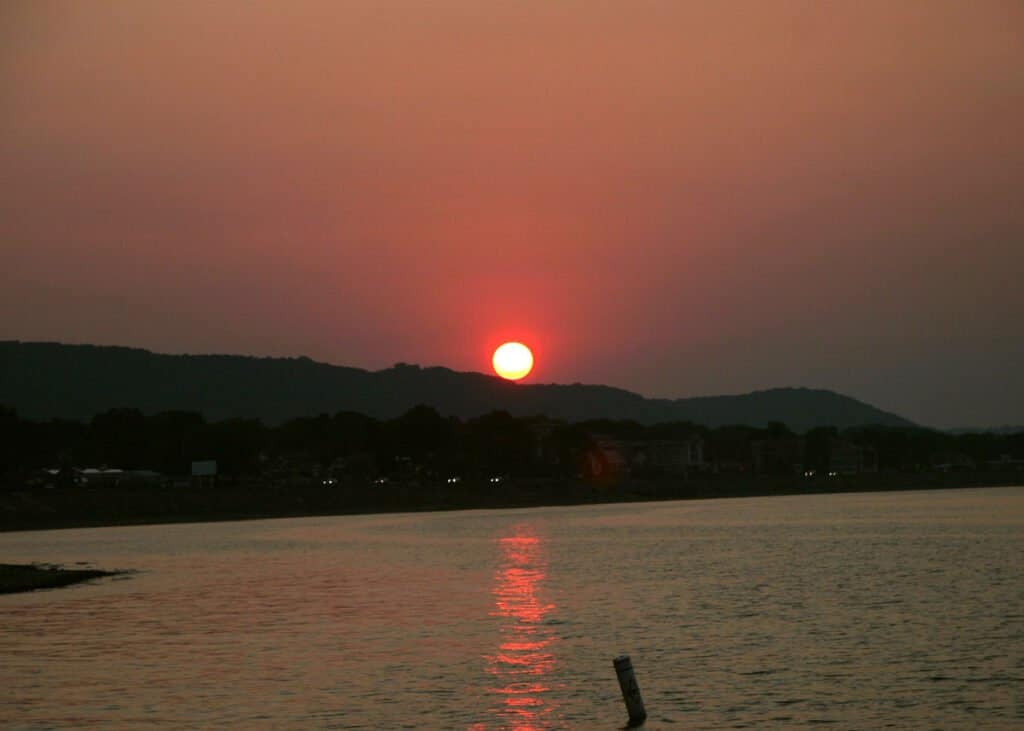
Lake Pepin is the largest lake formed by the Mississippi River.
©iStock.com/Jacob Nichols
Lake Pepin, a natural body of water straddling the state line between Minnesota and Wisconsin, is the largest lake formed by the Mississippi River. A massive glacial lake carved out a valley here during the end of the Ice Age. The Mississippi River, a glacial successor, created the lake by expanding out across the original valley and partially blocking it. This popular lake now has boat, car, and train traffic. One of the largest freshwater lakes in the US, Lake Pepin is 21 feet deep and 2 miles wide. The current St. Croix River basin in Minnesota was formed by the glacial rivers Warren and Duluth, which drained during the last Ice Age. These two glacial rivers shaped this lake.
Lake Pepin is a 30,000-acre natural enlargement that boasts magnificent bluffs surrounding a natural lake. Its profusion of plant and animal life acts as a large water filter, reducing silt and other contaminants. The lake has inspired many famous authors and painters, as well as the millions of tourists who visit each year. This lake is one of the Midwest’s most popular natural playgrounds for leisure and sporting activities. Its cities include Maiden Rock, Reads Landing, Stockholm, and Lake City.
12. Lake Whittington
Lake Whittington is an oxbow lake in Bolivar and Desha counties in Mississippi and Arkansas. The Arkansas-Mississippi boundary runs through the lake’s middle. The Mississippi River used to flow north-south, curving east into Mississippi. A narrow waterway connects the lake to the Mississippi. Bypassing the river, this route allows spawning fish to enter Lake Whittington. The canal also causes seasonal fluctuations in the Mississippi River’s water level. In the fall, when the Mississippi River’s water levels are normally lowest, Lake Whittington may be totally blocked off from the river, forming three pools of water.
Largemouth Bass Virus (LMBV) has been found in the lake; therefore, fish should not be transferred from this lake! If you plan to fish the water, make sure to clean any used live wells with bleach after. LMBV is not known to infect humans. In the lake are bluegill, catfish, flathead, gar, largemouth bass, minnows, silversides, white bass, and yellow bass. The main aquatic plant is duckweed. Although an Arkansas or Mississippi fishing license is required to fish the lake, all cars and most recreational boats must enter from Mississippi.
13. Lake Winneshiek
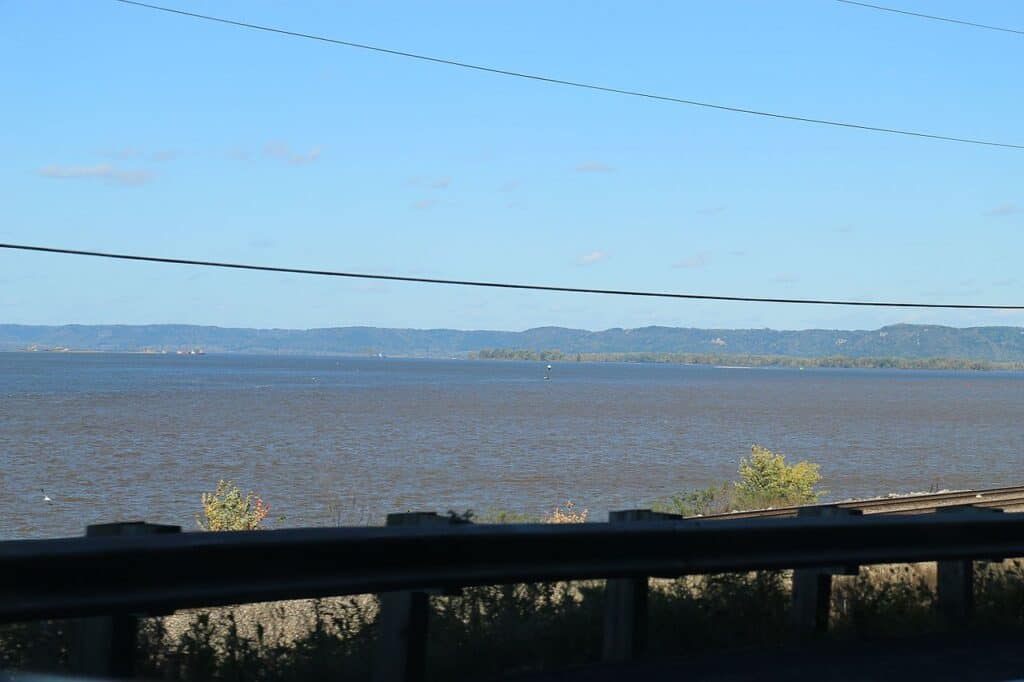
Lake Winneshiek encompasses the region of the Upper Mississippi River.
©Royalbroil / Creative Commons – License
Lock and Dam No. 9’s Navigation Pool “9” is known as Lake Winneshiek, and it encompasses the region of the Upper Mississippi River between the city of Lansing, Iowa, and Ferryville, Wisconsin, which is located four miles south of the dam. It is around 6,000 acres in size and is a part of the Upper Mississippi River National Wildlife and Fish Refuge (24 square kilometers). The Army Corps of Engineers is considering constructing islands in the lake as part of an initiative to expand habitat for local species.
You will be able to make the most of your time spent outside here, regardless of whether your preferred activity is hunting, fishing, hiking, biking, camping, picnicking, bird watching, or any of the other myriad forms of outdoor recreation.
14. Lake Winnibigoshish
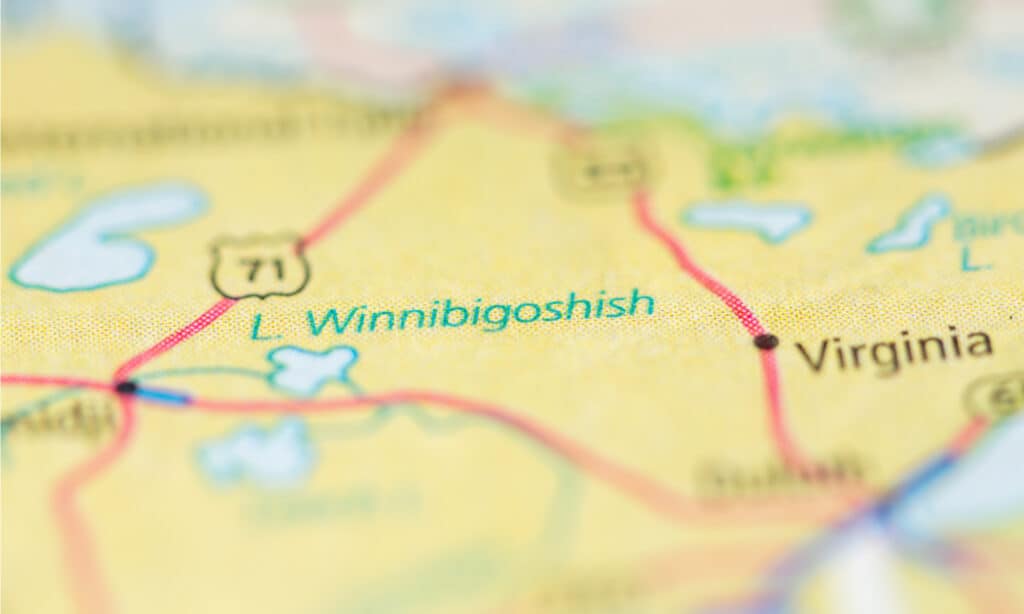
Lake Winnibigoshish offers fantastic fishing opportunities for walleye, perch, and musky, among other fish.
©SevenMaps/Shutterstock.com
Lake Winnibigoshish may be found in the Chippewa National Forest, which is situated in the middle of the northern part of Minnesota. The name derives from the Ojibwe language and translates to “brackish water.” The lake covers a total area of 67,000 acres, making it the fourth largest in the state. When it runs through the Mississippi River Basin, the Mississippi has a width of more than 11 miles in one location.
Lake Winnibigoshish offers fantastic fishing opportunities for walleye, perch, and musky, among other fish. A common recreational activity at the lake, due to its size of 67,000 acres, is boating. Numerous paths for hiking and biking may be found along the 141 kilometers of shoreline that surround the lake. Hunting prospects are abundant in the neighboring forest, where there are a lot of trees and wildlife.
Wrapping It Up
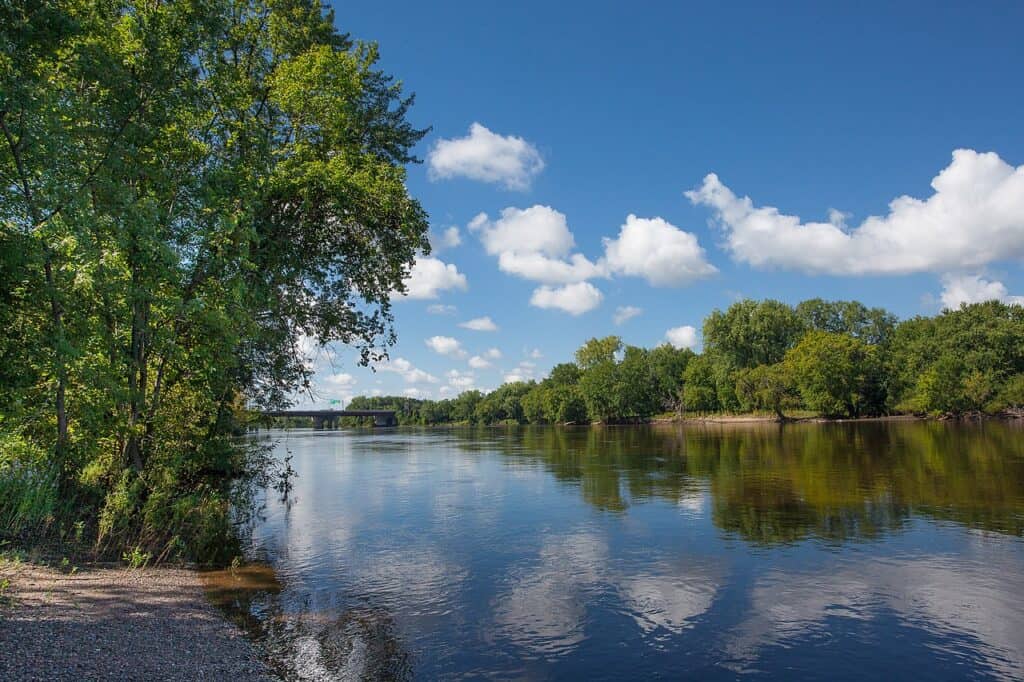
The Mississippi National River and Recreation Area covers 54,000 acres of land.
©NPS/Gordon Dietzman / Public Domain – License
There you have it, everything you need to know about the 14 lakes that make up the Mississippi River’s watershed! After reading this, you may already be familiar with one of these lakes or be inspired to pay a visit. It appears that many of these bodies of water offer excellent fishing and other activities suitable for the entire family. Because it extends through the Midwest and into several states, many people have the chance to visit at least one of these lakes in their lifetime!
Summary of 14 Lakes Connected to the Mississippi River: A – Z
| Number | |
|---|---|
| 1 | Lake Agassiz |
| 2 | Baldwin Lake |
| 3 | Lake Bemidji |
| 4 | Lake Beulah |
| 5 | Big Lake |
| 6 | Bussey Lake |
| 7 | Cass Lake |
| 8 | Frentress Lake |
| 9 | Lake Itasca |
| 10 | Lake Onalaska |
| 11 | Lake Pepin |
| 12 | Lake Whittington |
| 13 | Lake Winneshiek |
| 14 | Lake Winnibigoshish |
The photo featured at the top of this post is © iStock.com/KaraGrubis
Thank you for reading! Have some feedback for us? Contact the AZ Animals editorial team.






